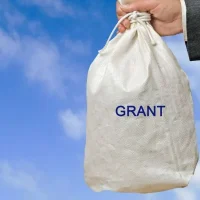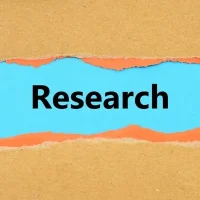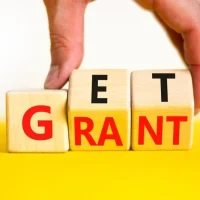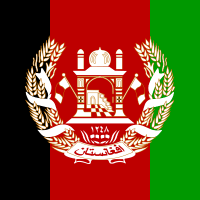Navigating the grant application process can often feel like traversing a labyrinth, especially for those new to the nonprofit sector. The first step in this journey is to familiarize oneself with the various stages of the application process. Typically, it begins with identifying funding opportunities that align with your organization’s mission and goals.
This involves not only understanding the specific requirements of each grant but also the priorities of the funding organization. Many funders provide detailed guidelines that outline what they are looking for in a proposal, including eligibility criteria, project scope, and reporting requirements. By thoroughly reviewing these guidelines, you can tailor your application to meet their expectations.
Once you have identified suitable grants, the next phase involves gathering the necessary documentation and data to support your proposal. This may include organizational information, project plans, and evidence of past successes. It is crucial to present a clear narrative that articulates your organization’s mission and how the proposed project aligns with the funder’s objectives.
Additionally, establishing a timeline for your project and outlining measurable outcomes can significantly enhance your application. Remember, clarity and conciseness are key; funders often sift through numerous applications, so making yours stand out through well-organized information is essential.
Identifying Potential Funding Sources
Networking and Building Relationships
Additionally, networking within your community can yield insights into local funding sources that may not be widely advertised. Engaging with other nonprofit professionals can also provide leads on potential funders who have previously supported similar projects.
Diversifying Funding Sources
Moreover, consider diversifying your funding sources to mitigate risks associated with relying on a single stream of income. This could involve exploring individual donations, crowdfunding campaigns, or corporate sponsorships alongside traditional grants. Each funding source has its own set of expectations and requirements, so it’s important to tailor your approach accordingly.
Understanding Funder Expectations
For instance, while foundations may prioritize long-term impact and sustainability, corporate sponsors might be more interested in visibility and brand alignment. By understanding these nuances, you can strategically position your organization to attract a broader range of funding opportunities.
Crafting a Compelling Proposal
Crafting a compelling proposal is an art that combines storytelling with data-driven evidence. A successful proposal should not only outline the specifics of your project but also convey the passion and urgency behind it. Start by clearly defining the problem your project aims to address and why it matters.
Use real-world examples and testimonials to illustrate the impact of this issue on your community. This narrative approach helps funders connect emotionally with your cause, making them more likely to support your initiative. In addition to storytelling, it’s essential to back up your claims with solid data and research.
Funders want to see that you have a well-thought-out plan supported by evidence of need and potential impact. Include statistics, case studies, or research findings that highlight the significance of your project. Furthermore, clearly outline your goals, objectives, and the methods you will use to achieve them.
A well-structured proposal that includes a logical flow of information will not only make it easier for funders to understand your project but also demonstrate your organization’s professionalism and preparedness.
Addressing Budget and Financial Considerations
A well-prepared budget is a cornerstone of any successful grant proposal. It serves as a roadmap for how funds will be allocated and demonstrates fiscal responsibility to potential funders. Begin by creating a detailed budget that outlines all anticipated expenses related to your project, including personnel costs, materials, travel expenses, and overhead costs.
Be transparent about how you arrived at these figures; providing justifications for each line item can help build trust with funders. In addition to outlining expenses, it’s important to consider how you will sustain the project beyond the grant period. Funders are increasingly interested in long-term sustainability plans that demonstrate how you will continue to support the initiative after initial funding has ended.
This could involve strategies such as developing partnerships with other organizations, generating earned income through services or products, or establishing a donor base for ongoing support. By addressing both immediate financial needs and long-term sustainability, you can present a comprehensive financial picture that appeals to funders.
Building a Strong Support Network
Building a strong support network is essential for any nonprofit organization seeking grants and funding opportunities. This network can include board members, volunteers, community leaders, and other stakeholders who are passionate about your cause. Engaging these individuals not only helps amplify your message but also provides access to valuable resources and connections within the philanthropic community.
Regularly communicating with your network about your organization’s goals and needs can lead to introductions to potential funders or collaborative opportunities. Additionally, consider forming partnerships with other organizations that share similar missions or target populations. Collaborative projects can often attract more funding than individual efforts because they demonstrate a united front and a broader impact.
When crafting proposals for collaborative initiatives, ensure that each partner’s role is clearly defined and that there is a shared commitment to achieving common goals. By leveraging the strengths of multiple organizations, you can enhance your proposal’s credibility and appeal to funders looking for innovative solutions to complex issues.
Overcoming Common Obstacles and Pitfalls
Understanding Funder Priorities
Ensure that your project aligns with the funder’s mission and that you adhere strictly to their application requirements. This step is crucial in increasing the chances of securing grant funding, as it demonstrates a clear understanding of the funder’s goals and objectives.
Another challenge many nonprofits face is insufficient time management during the application process. Grant writing can be time-consuming, and it’s easy to underestimate the amount of time needed to gather data, craft narratives, and finalize budgets.
Effective Time Management
To combat this issue, create a timeline for each grant application that includes deadlines for each component of the proposal. This proactive approach will help you stay organized and ensure that you submit high-quality applications on time.
By adopting a strategic approach to grant writing, organizations can overcome common obstacles and increase their chances of securing funding.
Best Practices for Grant Writing
Thorough research, careful planning, and attention to detail are essential components of a successful grant writing strategy.
Maximizing Grant Funding Opportunities
Ultimately, securing grant funding requires a deep understanding of the funder’s priorities, a well-planned application process, and a commitment to submitting high-quality proposals.
Leveraging Technology and Resources
In today’s digital age, leveraging technology can significantly enhance your grant application process. Various online tools and platforms can streamline research on funding opportunities, manage application deadlines, and facilitate collaboration among team members. For instance, project management software like Trello or Asana can help keep track of tasks related to grant writing while ensuring everyone involved is on the same page.
Additionally, consider utilizing data visualization tools to present complex information in an easily digestible format within your proposals. Graphs, charts, and infographics can effectively communicate key statistics or project outcomes in a visually appealing way that captures funders’ attention. Furthermore, online training resources and webinars focused on grant writing can provide valuable insights into best practices and emerging trends in the nonprofit sector.
Seeking Professional Assistance and Guidance
While many nonprofits have skilled staff members who can handle grant writing internally, seeking professional assistance can provide an added layer of expertise that enhances your chances of success. Grant writers or consultants who specialize in nonprofit funding can offer valuable insights into crafting compelling proposals and navigating complex application processes. They often bring experience from working with various funders and can help identify potential pitfalls before they become issues.
Moreover, engaging with local nonprofit support organizations or associations can provide access to workshops, training sessions, and networking opportunities that bolster your organization’s grant-seeking efforts. These resources can help build capacity within your team while fostering connections with other professionals in the field. By investing in professional development and seeking external guidance when needed, you position your organization for greater success in securing funding for its initiatives.
In conclusion, navigating the grant application process requires a multifaceted approach that encompasses understanding funding sources, crafting compelling proposals, managing budgets effectively, building networks, overcoming obstacles, leveraging technology, and seeking professional assistance when necessary. By implementing these strategies and learning from real-world examples within the nonprofit sector, organizations can enhance their chances of securing vital funding to support their missions and drive meaningful change in their communities.








































